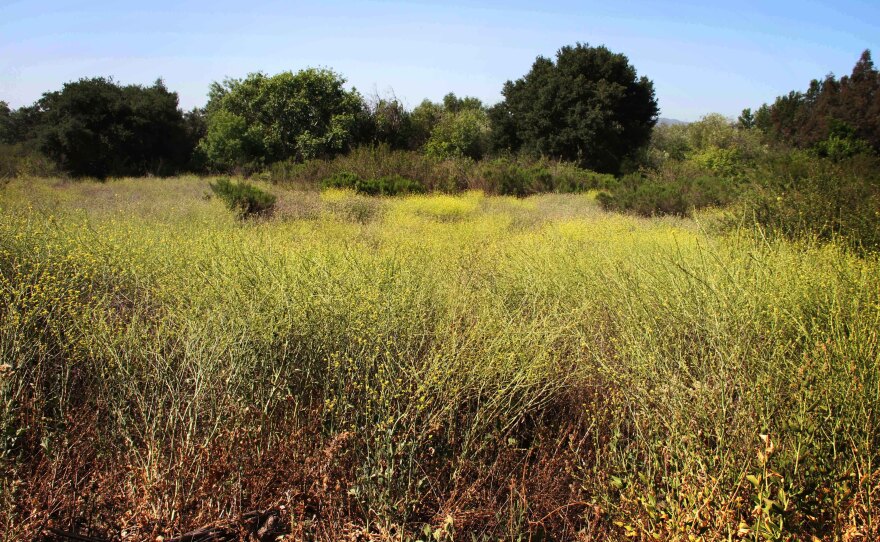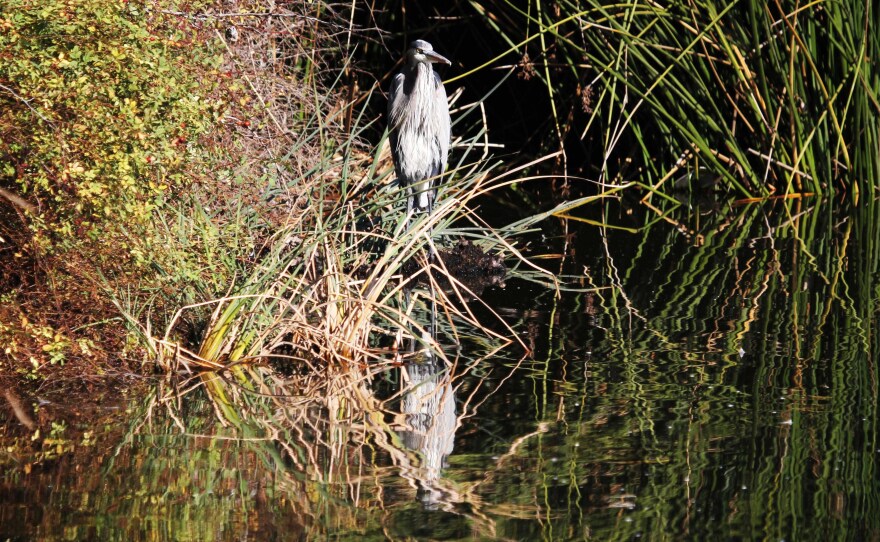

Just a stone's throw from two of Los Angeles' busiest freeways lies the Sepulveda Basin Wildlife Reserve -- a unique spot among an urban jungle.
The northern portion of the reserve is adorned with cottonwood trees 30-feet tall, spots of coyote bush and other spread of plants. Native plants cover 50 percent of the nature spot, says Kris Ohlenkamp with the San Fernando Valley Audubon Society. He adds, "On the other side it was significantly more than that."
A cement wildlife corridor leads to the southern part of the reserve, which contrasts the greenery on the opposite side.
"This 48 acres was the original wildlife area," Ohlenkamp says. "And now it's all gone."
As far as the eye can see, flattened trees, branches and bushes are scattered like a game of pick-up sticks. Raised tire treads from heavy machinery lattice the ground in all directions.
Dave Weeshoff, also with the SFVAS, says this area -- decades in the making -- provided food, shelter and a breeding habitat for wildlife and more than 200 species of birds.
Weeshoff says this is phase one. Then, herbicides will be spread to prevent anything from growing. "This is going to get bad and then even worse!" he says.
The U.S. Army Corp of Engineers manages that portion of the Los Angeles River flood plain. Tomas Beauchamp, with the Corps, says they tried multiple tactics to address current issues in the area.
"Part of that plan is to create habitat that is conducive to flood control operations as well as environmental stewardship and native restoration," Beauchamp says.
He says the clearing was necessary to improve flood control operations and public safety. Under its vegetation management plan, he says the Corps will replace what was removed with native grasses to discourage homeless camps, drug dealing and lewd activity.
Beauchamp says they've approached dealing with the problems in the area with law enforcement.
"This was like a hurricane went through there," says California State Sen. Fran Pavley (D-Agoura Hills), whose district includes the reserve.
She's asking the Corps to explain its finding that no wildlife or habitat would be significantly disturbed.
"It looked like extensive unneeded devastation of acres and acres of land and you had to ask yourself not only why, but also the fact that the public felt they had no knowledge," Pavley says.
The Corps says it posted notice of the project on its website but received no comments. Under pressure from politicians, other government agencies and environmentalists it has temporarily halted the work.
U.S. Rep. Brad Sherman (D-Calif.) says moving forward requires balancing the interests of public safety and the environment.
"First is flood control, but beyond that anything that can be done both to provide habitat for wildlife and viewing opportunities for valley residents is important," Sherman says.
Now, in an area of where this time of year the California Thrasher would be in full song -- setting up its territory to attract a mate -- there's hardly a chirp. In the Thrasher's absence, Weeshoff pulls out his phone and clicks on an app that plays the bird's call.
Copyright 2013 NPR. To see more, visit www.npr.org.






